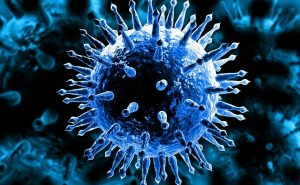Information noise around the outbreak of COVID-19 infection in China has been “keeping” the population in suspense for several months. However, is the situation that has arisen so unique? Or are such outbreaks a common phenomenon and will appear more than once in the future?
Origin of COVID-19
According to official information, the coronavirus again “came” from animals, as it already happened in 2002 and 2015. Then the outbreak of SARS SARS (2002-2003) and the Middle East respiratory syndrome MERS (2015), caused by other types of coronavirus, killed about 800 people. And the source of the virus was palm martens and camels.
This time, bats were the source. Moreover, according to Maria Orlova, an employee of the biodiversity monitoring laboratory of the Biological Institute of Tomsk State University (TSU), this situation is more than natural.
The fact is that the number of bats in the tropics is extremely high, and they are in no way isolated from humans. Moreover, in the countries of Southeast Asia, bats are also a food product. Therefore, according to the expert, “the appearance in China of the new 2019-nCoV virus and its transmission to humans from the point of view of biology are quite logical and predictable events.”
At the same time, virologists note that the family of coronaviruses has about 30 species that cause ARVI – from mild colds to SARS (severe acute respiratory syndrome). So the emergence of COVID-19 is more common than unique. And it is associated, first of all, with the high mutability of viruses.
Man against the virus
In the body of a relatively healthy person, the coronavirus is not able to exist for a long time. The immune forces quickly “deal with the invader” and produce antibodies. Therefore, in 80% of cases, COVID-19 infection ends with a full recovery.
A severe course with complications is typical for people with weakened immunity. The elderly, people taking immunosuppressive therapy, people with severe chronic diseases are “easy prey” for the virus. And it is for them that he poses a mortal danger.
For the rest, the disease is no worse than the usual ARVI and does not pose a particular threat.
Commercial laboratories do not have systems to detect the “new” type of coronavirus.
But we all understand that the season of colds is not over and against the background of the “sensational infection” we should not forget about the “traditional”, and sometimes no less severe, common winter infections:
respiratory tract virus (RS virus),
metapneumovirus https://en.wikipedia.org/wiki/Human_metapneumovirus,
parainfluenza types 1, 2, 3, 4,
coronavirus of traditional types OC43, E229, NL63, NCUI,
rhinovirus,
adenovirus of groups B and C,
bocavirus,
and, of course, influenza A and B.



